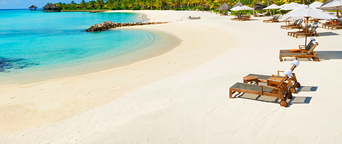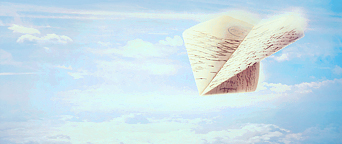Phuket

Northwest Coast
Mai Khao means “white tree” in English, which is interesting as this says nothing of the beach’s 11-kilometre length or virtual wildness. Nor is it connected to the fact that the island’s coarsest sand can be found here. Those looking for a little peace and tranquillity will be most welcome however; something the turtles that come to lay their eggs on this beach in winter so look forward to. Anyone going into the water though is cautioned of the strong year-round currents around the shore, with authorities highly recommending that all beachgoers stay out of the water from May to September due to high waves.
Nai Yang is located closest to Mai Khao, and is just a 5-minute drive from the airport. Forming part of the Sirinath National Park, the area boasts beautiful coral reefs in the north, while the sea and seabed prove not only safe but pleasant for swimmers. Though this beach is often quite popular with the locals, there is more than enough room for everyone to relax in the sand or at the many restaurants and bars dotted along the coast.
Nai Thon is known as one of the quietest and most isolated beaches on the island, with the journey taking you along roads over hills amid heavy rainforest. But, as soon as the coastline comes into view, it’s nothing but beautiful golden sand, creating a tropical paradise in peak season. High waves are a consideration from June to August, owing to the almost non-existent low tide year-round. This region sees mainly those looking for a little R&R or those with families, so while there are several restaurants located on the beach, if you’re looking for a party you’ll be better off heading to Patong Beach.
NOTE!
- The northwest coast beaches have been designated part of the Sirinath National Park zone since 1986, making all motorised sports forbidden in this area.
- In November 2014, all sun lounges, sun shades and seafront diners were removed from Phuket's public beaches. Now, these amenities can only be found on hotel-owned beaches.
South Coast
Nai Harn, found on the island’s south coast, is home not only to a beach but a yacht club just down the way, treating tourists to majestic views of seafaring vessels. A better location for swimming is hard to beat in the dry season. Just beware of strong currents and large waves from June to August.
Rawai was Phuket’s very first beach, and continues to attract tons of people despite its rocky coastline and near impossible swimming conditions in low tide. Even with the elegant Mangosteen resorts located nearby, the area proves a bit eclectic with traditional Thai boats anchored not far from shore and a plethora of world-travellers calling this place home.
East Coast
Friendship beach is located not far from southern Phuket’s main transport centre, and is the point from which many of the area’s boats depart. All of this contributes to making the sea here dirty and quite shallow, most especially during low tide, when the water pulls back by almost a whole kilometre.
Panwa beach, found in Panwa Cape, is fortuitously protected from the western monsoons, making it possible to swim year-round. While the sea is always calm, low tides reveal a rocky seabed and tend to generate sandbars.
Siray beach is located on the island of the same name, and is connected to Phuket province by a small bridge, not far from Phuket town proper. In addition to the five-star Westin Siray Bay Resort, here you’ll find a stony seabed, along with water that is often quite shallow, making swimming impossible in low tide.
West Coast
Bang Tao is a six-kilometre beach featuring Laguna – one of the best hotel complexes on the island. The velvet-like sand, azure-clean water, and slightly sloping seabed all combine to offer comfort and luxury amid amazingly beautiful nature, with low tide creating little problems for swimmers.
Surin is known as “millionaires’ beach” thanks to an abundance of VIP-class hotels and luxury villas. A wide range of water sports only add to the allure of this already great swimming area. Though, swimmers must remain cautious of underwater currents and high waves during rainy season.
Pansea beach is one many consider the most beautiful of Phuket. Stretching just a quarter of a kilometre long, only guests of Surin and Amanpuri hotels are allowed to use it. However, the fine snow-white sand and beautiful coral reefs make it the perfect place to officially tie the knot.
Kamala is a wide coastal belt with clean sand and a caressing sea, boasting its own coral reef in the southern corner. Beyond the beach are plenty of snack bars and cafés, with an alluring food market setting up shop twice a week. Low tide is noticeable here, but only slightly, with waves tending to increase during the rainy season.
Nakalay and Kalim are small beaches located just north of Patong, but quieter than Patong itself. Swimming here is nearly impossible because of the stony seabed. However, locals can often be seen gathering crabs from the nearby coral reef thanks to the regular low tide, which is in itself a sight to see.
Patong attracts tourists with its abundance of bars, restaurants, discos, and vibrant nightlife, making it a great place for active tourists who have come to vacation without small children. This is a great beach to soak in the sun, with loungers, which can be rented for a fee, stretching across the area’s long coastal belt. Though the water here is of average depth, with a slightly sloping seabed, large stones in the north make it difficult to get into the sea. But this can easily be overcome by moving over to the central part of Patong beach.
Tri Trang is a small quiet beach, adjacent to Patong’s south, known for its peaceful and romantic atmosphere. Holidaymakers will need to be aware of stones at the sea’s entrance, which can make it tricky to manoeuvre in high tide. In low tide, coral reefs and small rocks make it inconvenient to swim, but this just provides a great opportunity to head into the centre to find more lively surroundings.
Southwest Coast
Karon beach stretches for 4 kilometres to the south of Patong, and is famous for its crunchy white sand and large waves in rainy season. You’ll find the smaller Karon Noi beach adjacent to its bigger brother across the nearest northern cape.
Kata beach comes complete with a small bay boasting a relaxed and cosy atmosphere. Separated into two parts, the north overlooks the small Pu Island with a picturesque coral reef nearby, while hotels line the beach to the south. The water is perfect for swimming and snorkelling here, with surfers attracted to the high waves shortly before and during the rainy season (May – October).
Samui

From May to September, Thailand’s west coast experiences its monsoon season, and is often accompanied by torrential rain. The gulf coast however, home to Samui Island, tends to fall prey to the prevailing heavy winds and rain only around the end of October and into November. Rainfall is also common in other months of the year, though at this time the precipitation is seen more as a blessing than a curse, as it cuts the intense humidity and cools the sweltering temperatures. Travellers should be aware that large waves often occur after the monsoon season on this island, especially in areas of deep water, such as on Lamai and Maenam beaches. These waves often present a problem for those who would prefer to swim in calmer seas. Therefore, please choose carefully the time of year and coast that is right for you.
West Coast
Bang Po, Naton, and Baan Taling Ngam relate to the west, southwest, and northwest parts of the island. The sea is shallow year-round, with a strong low tide observed from May to October. While this is especially pronounced in the west, the sunsets make up for any inconveniences experienced otherwise. The exception is Baan Taling Ngam beach, where the tides start pulling back only in August, with minor waves making an appearance from December to February.
South Coast
Tong Krut, Baan Khao, and Hua Thanon beaches all enjoy water that is quite calm at any time of year, if a little shallow. For good or bad, these areas also tend to attract fishermen – often with their nets out, and function as parking spots for speed boats. Though swimming is possible throughout the year, a strong low tide makes it somewhat problematic in the summer months (May – July), while small waves are evident from December to February.
Southwest Coast
Lamai is one of the most popular beaches in this area, second only to Chaweng, thanks to its deep water and coarse yellow sand. Though swimming is possible throughout the year, low tides affect the water’s depth around the Renaissance to the Buddy Samui hotels from May to September, while high tide (and large waves in December – February) make it nicer to swim from October to April.
East Coast
Chaweng is the east coast’s central beach, and the most popular place to vacation thanks to a countless number of hotels, restaurants, souvenir shops, and discos. The northern part of the beach offers shallow sea throughout the year, while the central and southern parts enjoy an average sea depth with minor waves, a refreshing breeze coming off the sea, and fine white sand. Swimming is possible throughout the year, but low tide in the north (from the Anantara Lawana hotel to the Chaweng Garden hotel) makes it somewhat problematic in the summer months (May – August). From December to February, one needs to watch for waves.
Chaweng Noi is a small beach adjacent to Chaweng, featuring an average water level, high trees on the beach, a clean seabed, and fine sand. Few people enjoy the benefits of this neighbouring beach, despite the possibility to swim year round. With waves occurring from December to February, very low tides in the summer months (May – June) mean shallower water, though this has little effect on swimmers’ enjoyment.
Northeast Coast
Choeng Mon is a separate area of the island with a large number of small cosy bays for swimming in mostly shallow water. The area is most suited to those who want to relax, away from the busy streets of Thailand, and enjoy a little solitude. Swimming is possible throughout the year, but is problematic in the summer months (May – July). Minor waves often appear from December to February.
North Coast
Ban Rak,
Big Buddha,
Bo Phut and
Maenam
all offer various features. The first two are not your best bets when looking for a nice place to spend the day. Along with a dirty seabed, the water around Ban Rak and Big Buddha is incredibly shallow, making swimming in the summer months impossible.
Bo Phut offers deeper water, but the seabed can be very sludgy, and there is little to no sea breeze, with rising tides observed throughout the year. A fishing village with plenty of seafood restaurants and souvenir shops is within walking distance of all three of these beaches, making the area attractive for those looking to vacation closer to the social fabric of the area, while at the same time keeping their distance from crowded streets and beaches.
Maenam, on the other hand, is considered to be the best of them all in terms of cleanliness, water depth, distance from the centre, as well as the view featuring the neighbouring Phangan Island. Add to the list the small number of tourists and only a 15- to 20-minute drive to all of the main restaurants and entertainment venues and you’ve got a winner. Here, and at Bo Phut, swimming is possible year-round with only minor waves occurring from December to February.



